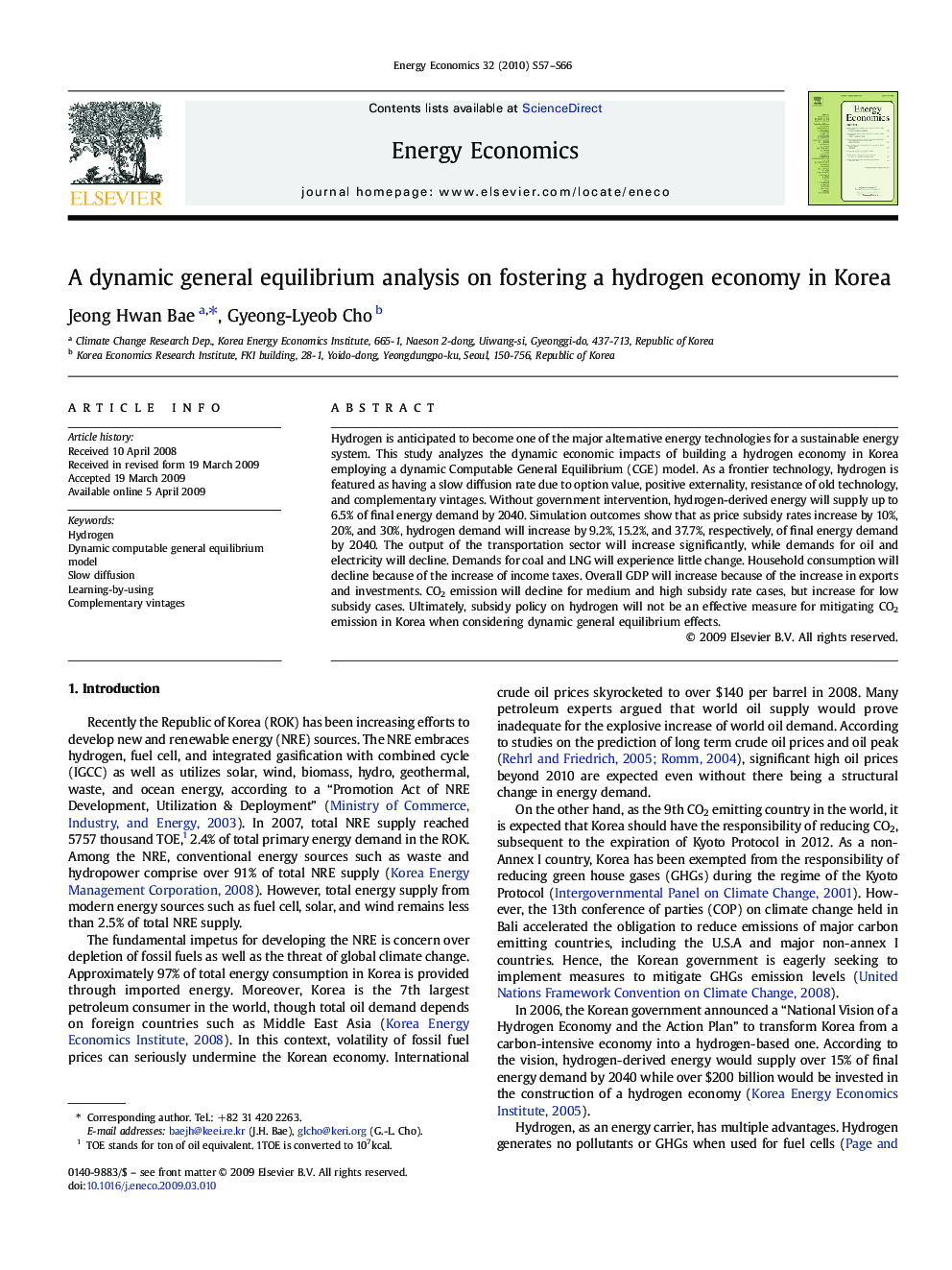| کد مقاله | کد نشریه | سال انتشار | مقاله انگلیسی | نسخه تمام متن |
|---|---|---|---|---|
| 5065687 | 1372325 | 2010 | 10 صفحه PDF | دانلود رایگان |
عنوان انگلیسی مقاله ISI
A dynamic general equilibrium analysis on fostering a hydrogen economy in Korea
دانلود مقاله + سفارش ترجمه
دانلود مقاله ISI انگلیسی
رایگان برای ایرانیان
موضوعات مرتبط
مهندسی و علوم پایه
مهندسی انرژی
انرژی (عمومی)
پیش نمایش صفحه اول مقاله

چکیده انگلیسی
Hydrogen is anticipated to become one of the major alternative energy technologies for a sustainable energy system. This study analyzes the dynamic economic impacts of building a hydrogen economy in Korea employing a dynamic Computable General Equilibrium (CGE) model. As a frontier technology, hydrogen is featured as having a slow diffusion rate due to option value, positive externality, resistance of old technology, and complementary vintages. Without government intervention, hydrogen-derived energy will supply up to 6.5% of final energy demand by 2040. Simulation outcomes show that as price subsidy rates increase by 10%, 20%, and 30%, hydrogen demand will increase by 9.2%, 15.2%, and 37.7%, respectively, of final energy demand by 2040. The output of the transportation sector will increase significantly, while demands for oil and electricity will decline. Demands for coal and LNG will experience little change. Household consumption will decline because of the increase of income taxes. Overall GDP will increase because of the increase in exports and investments. CO2 emission will decline for medium and high subsidy rate cases, but increase for low subsidy cases. Ultimately, subsidy policy on hydrogen will not be an effective measure for mitigating CO2 emission in Korea when considering dynamic general equilibrium effects.
ناشر
Database: Elsevier - ScienceDirect (ساینس دایرکت)
Journal: Energy Economics - Volume 32, Supplement 1, September 2010, Pages S57-S66
Journal: Energy Economics - Volume 32, Supplement 1, September 2010, Pages S57-S66
نویسندگان
Jeong Hwan Bae, Gyeong-Lyeob Cho,